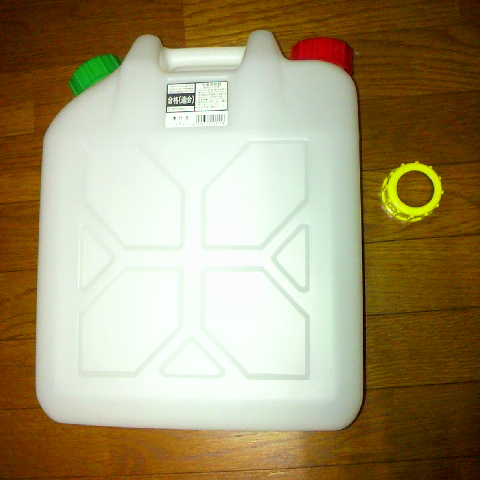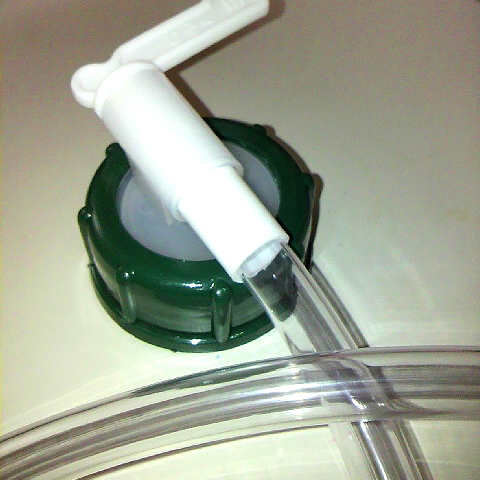surume
Well-Known Member
I am currently brewing a 10 litre batch of hefeweizen in a polyethylene water tank, which looks like this:

Currently it is upright, and where the red cap was, I have attached a rubber bung and airlock. Right now it is fermenting nicely.
Initially I was planning to remove the airlock after primary fermentation is finished, and attach a spigot + tubing system to where the red cap was, which will make bottling much easier for me. Homebrewing supplies are rare and expensive in Japan, so I am trying to improvise a lot as well.
The spigot system looks like this:

However, this will mean that I will have to rotate the water tank 90 degrees on its side. This will also mean that whatever krausen and residue (from yeast and hops) will reenter my fermented wort.
Will there be be any off-flavours or problems that arise if the krausen and residue get into my brew? Or will leaving it on its side for a few days allow the stuff to sink to the bottom, therefore not getting into my bottles? If anyone has an idea, I would really appreciate it.
Thanks in advance,
Surume

Currently it is upright, and where the red cap was, I have attached a rubber bung and airlock. Right now it is fermenting nicely.
Initially I was planning to remove the airlock after primary fermentation is finished, and attach a spigot + tubing system to where the red cap was, which will make bottling much easier for me. Homebrewing supplies are rare and expensive in Japan, so I am trying to improvise a lot as well.
The spigot system looks like this:

However, this will mean that I will have to rotate the water tank 90 degrees on its side. This will also mean that whatever krausen and residue (from yeast and hops) will reenter my fermented wort.
Will there be be any off-flavours or problems that arise if the krausen and residue get into my brew? Or will leaving it on its side for a few days allow the stuff to sink to the bottom, therefore not getting into my bottles? If anyone has an idea, I would really appreciate it.
Thanks in advance,
Surume


